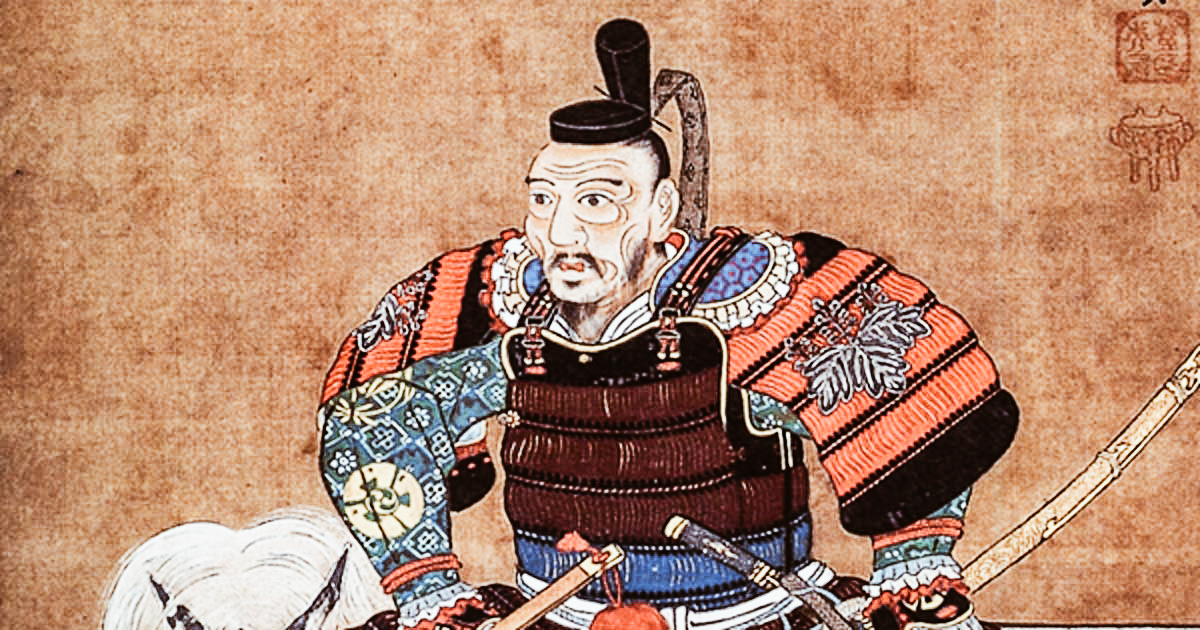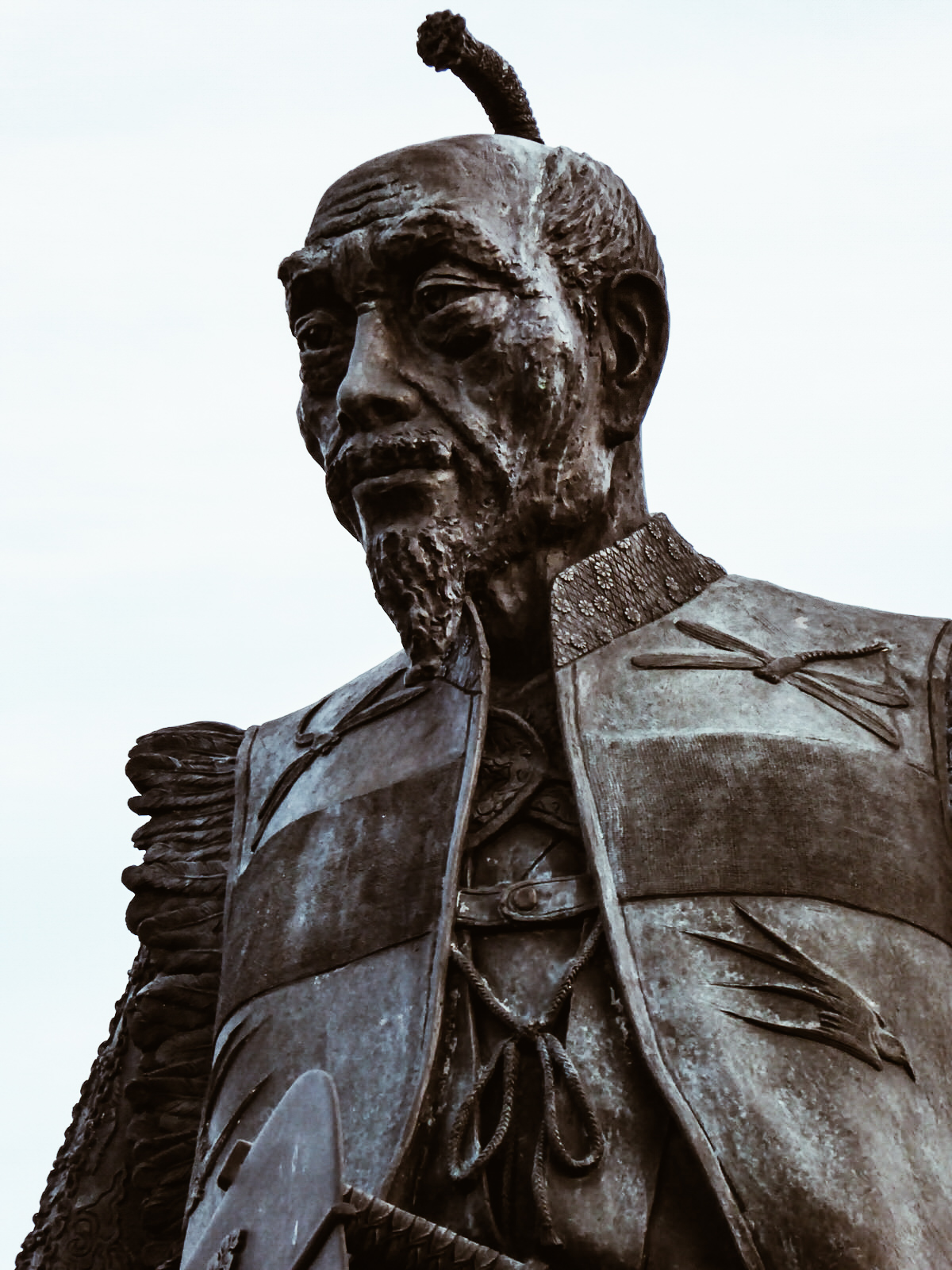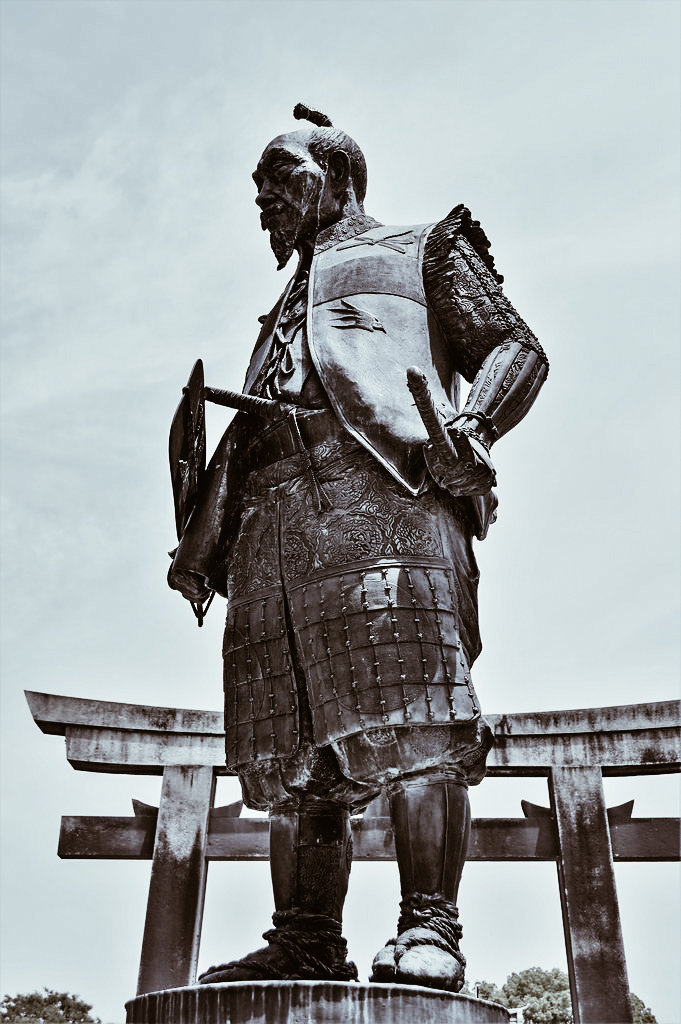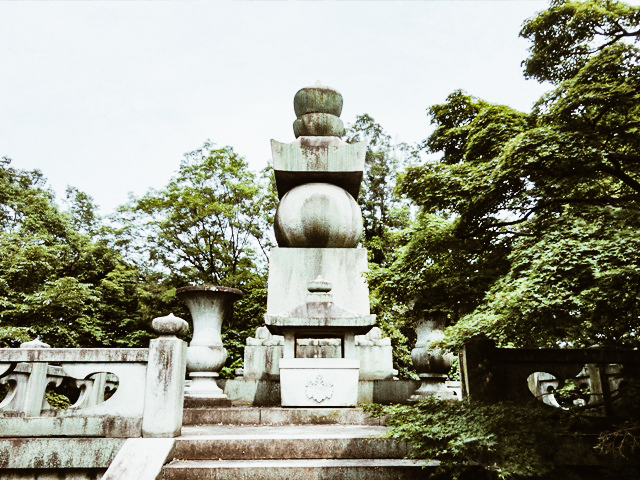Japan History: Toyotomi Hideyoshi
Toyotomi Hideyoshi, il grande unificatore del Giappone
scritto da: SaiKaiAngel

photo credits: ancient-origins.net
Toyotomi Hideyoshi (17 marzo 1537 – 18 settembre 1598) era un samurai, nonchè daimyō, successore di Oda Nobunaga come “grande unificatore” del Giappone, ponendo fine al periodo Sengoku. Il periodo del suo dominio è chiamato Momoyama, dal nome del castello di Hideyoshi. Sembra che la sua nascita fu nella provincia di Owari, la casa del clan Oda (l’attuale Nagoya nella prefettura di Aichi). Figlio di un contadino-ashigaru di nome Yaemon. Sembra che il suo nome d’infanzia fosse Hiyoshi-maru. Suo padre morì quando Hideyoshi aveva 7 anni.
Hideyoshi fu mandato a studiare in un tempio da giovane, ma rifiutò quella vita per andare a caccia di avventure. Sotto il nome Kinoshita Tōkichirō si unì per la prima volta al clan Imagawa come servitore di un sovrano locale di nome Matsushita Yukitsuna. Ha viaggiato fino alle terre di Imagawa Yoshimoto, daimyō della provincia di Suruga, e lo ha servito solo per fuggire con una somma di denaro affidatagli da Matsushita Yukitsuna.

photo credits: samurai-world.com
Il giovane Toyotomi Hideyoshi guidò un piccolo gruppo per attaccare il castello sul monte Inaba e nel 1558, si unì al clan Oda, guidato da Oda Nobunaga, come ashigaru (lett. “piedi leggeri”che furono impiegati nei conflitti del Giappone feudale dalla casta dei samurai.)
Divenne uno dei portatori di sandali di Nobunaga ed era presente nella battaglia di Okehazama nel 1560 quando Nobunaga sconfisse Imagawa Yoshimoto per diventare uno dei più potenti signori della guerra nel periodo Sengoku. Sembra anche che abbia supervisionato la riparazione del castello di Kiyosu gestendone la cucina.
Nel 1561 Hideyoshi sposò la figlia adottiva di Asano Nagakatsu. Ha effettuato riparazioni sul castello di Sunomata con suo fratello minore Toyotomi Hidenaga, Hachisuka Masakatsu e Maeno Nagayasu. Costruì un forte a Sunomata, di notte scoprendo anche una via segreta verso il Monte Inaba
Assedio al castello di Inabayama
Hideyoshi ebbe molto successo come negoziatore. Nel 1564, riuscì a convincere i signori della guerra Mino a disertare il clan Saitō. Hideyoshi si avvicinò a molti samurai convincendoli a sottomettersi a Nobunaga.
La facile vittoria di Nobunaga al castello di Inabayama nel 1567 fu in gran parte dovuta agli sforzi di Hideyoshi per questo divenne uno dei generali più illustri di Nobunaga, alla fine prendendo il nome di Hashiba Hideyoshi. Il nuovo cognome includeva due personaggi, uno ciascuno degli altri due uomini di Oda, Niwa Nagahide e Shibata Katsuie.
Battaglia di Anegawa
Hideyoshi guidò le truppe nella battaglia di Anegawa nel 1570 in cui Oda Nobunaga si alleò con Tokugawa Ieyasu per assediare due fortezze dei clan Azai e Asakura. Partecipò all’assedio di Nagashima nel 1573 e nello stesso anno, Nobunaga nominò Hideyoshi daimyō di tre distretti nella parte settentrionale della Provincia di Ōmi. Hideyoshi si trasferì a Kunitomo e ribattezzò la città di Nagahama in omaggio a Nobunaga. In seguito Hideyoshi si trasferì nel porto di Imahama sul lago Biwa e prese il controllo della vicina fabbrica di armi da fuoco Kunitomo che era stata istituita alcuni anni prima dagli Azai e dagli Asakura facendo aumentare la sua produzione.
Inoltre, ha combattuto nella battaglia di Nagashino dopodichè Nobunaga mandò Hideyoshi al castello di Himeji per conquistare la regione di Chūgoku dal clan Mori nel 1576.
Nel 1577, combattè nella battaglia di Tedorigawa, nell’assedio di Miki, nell’assedio di Itami (1579) e nell’assedio di Takamatsu del 1582.
Battaglia di Yamazaki e conflitto con Katsuie
Dopo gli omicidi di Honnō-ji di Oda Nobunaga e del suo figlio maggiore Nobutada nel 1582 per mano di Akechi Mitsuhide, Hideyoshi, in cerca di vendetta per la morte del suo amato signore, fece pace con il clan Mōri e sconfisse Akechi nella battaglia di Yamazaki .
Successivamente, essendo in una buona posizione, chiamò il potente daimyo a Kiyosu in modo che potessero determinare l’erede di Nobunaga. Oda Nobukatsu e Oda Nobutaka litigarono, quindi l’erede divenne Samboshi, nipote di Nobunaga. Avendo conquistato il sostegno degli altri due anziani di Oda, Niwa Nagahide e Ikeda Tsuneoki, Hideyoshi prese la posizione di Hidenobu e la sua influenza sul clan Oda. Distribuì le province di Nobunaga tra i generali e formò un consiglio di quattro generali. La tensione tra Hideyoshi e Katsuie sfociò nella battaglia di Shizugatake dell’anno successivo in cui Hideyoshi distrusse le forze di Katsuie. A quel punto Hideyoshi aveva affrontato la maggior parte del clan Oda e il controllo di 30 province.
Costruzione del castello di Osaka
Nel 1582, Hideyoshi iniziò la costruzione del castello di Osaka sul sito del tempio Ishiyama Hongan-ji distrutto da Nobunaga; questo divenne l’ultima roccaforte del clan Toyotomi dopo la morte di Hideyoshi.
Battaglia di Komaki e Nagakute
Oda Nobukatsu, ostile a Hideyoshi, si alleò con Tokugawa Ieyasu e le due parti combatterono nella battaglia di Komaki e Nagakute. Alla fine risultò in una situazione di stallo, anche se le forze di Hideyoshi subirono un duro colpo. Infine, Hideyoshi fece pace con Nobukatsu, ponendo fine al pretesto per la guerra tra i clan Tokugawa e Hashiba. Ieyasu alla fine accettò di diventare un vassallo di Hideyoshi.
Hideyoshi non ha mai ottenuto il titolo di shōgun, ma fece in modo di farsi adottare da Konoe Sakihisa, uno degli uomini più nobili appartenenti al clan Fujiwara e assicurò una successione di titoli di alta corte tra cui, nel 1585, la prestigiosa posizione di Imperial Regent (kampaku). Nel 1586, Hideyoshi ricevette ufficialmente il nome del nuovo clan Toyotomi dalla corte imperiale e costruì, il Jurakudai, un sontuoso palazzo, nel 1587 intrqattenendo l’imperatore regnante, Go-Yōzei, l’anno successivo.
Giappone unificato sotto Toyotomi Hideyoshi
Successivamente, Hideyoshi soggiogò la provincia di Kii e conquistò Shikoku sotto il clan Chōsokabe. Assunse poi il controllo della provincia di Etchū conquistando anche Kyūshū.
Nel 1587 Hideyoshi bandì i missionari cristiani da Kyūshū per esercitare un maggiore controllo sui daimyōs Kirishitani.
Nel 1588 proibì ai comuni contadini di possedere armi e iniziò a confiscarle. Le spade furono fuse per creare una statua del Buddha. Questa misura fermò efficacemente le rivolte dei contadini e assicurò una maggiore stabilità a spese della libertà dei singoli.
Assedio di Odawara
L’assedio di Odawara del 1590 contro il clan Hōjō nella regione di Kantō eliminò l’ultima resistenza all’autorità di Hideyoshi. La sua vittoria significò la fine del periodo Sengoku. Durante questo assedio, Hideyoshi offrì a Ieyasu le otto province governate da Hōjō nella regione di Kantō in cambio della sottomissione delle cinque province di Ieyasu che accettò questa proposta.
Nel febbraio del 1591, Hideyoshi ordinò a Sen no Rikyū di suicidarsi, probabilmente in uno dei suoi scoppi d’ira. Rikyū era stato un fidato sostenitore e maestro della cerimonia del tè sotto Hideyoshi e Nobunaga apportò inoltre cambiamenti significativi all’estetica della cerimonia del tè che ebbe un’influenza duratura su molti aspetti della cultura giapponese. Anche dopo la morte di Rikyū, si dice che Hideyoshi abbia costruito i suoi numerosi progetti di costruzione basati sull’estetica promossa da Rikyū, forse suggerendo che si pentì delle sue azioni.
Dopo la morte di Rikyū, Hideyoshi portò la cerimonia del tè a Noh, che aveva studiato da quando era diventato reggente imperiale.
La stabilità della dinastia Toyotomi dopo la morte di Hideyoshi fu messa in dubbio con la morte di suo figlio Tsurumatsu nel settembre del 1591. Il bambino di tre anni era il suo unico figlio. Quando il suo fratellastro Hidenaga morì poco dopo, Hideyoshi nominò suo nipote Hidetsugu suo erede, adottandolo nel gennaio del 1592. Hideyoshi si dimise come kampaku per ottenere il titolo di taikō e Hidetsugu gli successe come kampaku.
Houkokubyo (Mausoleo di Toyotomi Hideyoshi) Higashiyama-ku, Kyoto
Nel momento in cui la sua salute cominciava a vacillare, Hideyoshi ha portato avanti il sogno di Oda Nobunaga, quello di una conquista giapponese fino alla Cina, arrivando alla dinastia Ming attraverso la Corea.
Hideyoshi chiese ai coreani un passaggio per la Cina nel 1587, ma ottenne un rifiuto, perchè la Corea era alleata con la Cina e nell’aprile e luglio del 1591 rifiutò anche la richiesta di passaggio attraverso la Corea per paura di mettere a rischio la sicurezza. Quindi, nell’agosto del 1591, Hideyoshi ordinò che iniziassero i preparativi per un’invasione della Corea.

photo credits: flickr.com
Prima campagna contro la Corea
Nella prima campagna, Hideyoshi nominò Ukita Hideie come maresciallo e lo fece entrare nella penisola coreana nell’aprile del 1592. Konishi Yukinaga a quel punto occupò Seoul il 19 giugno. Dopo la caduta di Seoul , I comandanti giapponesi hanno tenuto un consiglio di guerra e hanno determinato obiettivi di sottomissione chiamati Hachidokuniwari da ciascun corpo. In soli quattro mesi, le forze di Hideyoshi fecero rotta verso la Manciuria e occuparono gran parte della Corea. Il re coreano Seonjo fuggì a Uiju e chiese l’intervento militare dalla Cina. Nel 1593, l’imperatore Wanli di Ming China inviò un esercito sotto il generale Li Rusong per bloccare la prevista invasione giapponese della Cina e riconquistare la penisola coreana. L’esercito Ming di 43.000 soldati guidati da Li Ru-Song ha continuato ad attaccare Pyongyang.
Il 7 gennaio 1593, le forze di soccorso di Ming sotto Li catturarono ancora Pyongyang e circondarono Seoul, ma Kobayakawa Takakage, Ukita Hideie, Tachibana Muneshige e Kikkawa Hiroie vinsero la Battaglia di Byeokjegwan nella periferia di Seoul. Alla fine della prima campagna, l’intera marina giapponese fu distrutta dall’ammiraglio Yi Sun-sin della Corea, la cui base era situata in una parte della Corea che i giapponesi non potevano controllare. Questo, in effetti, mise fine al sogno del Giappone di conquistare la Cina poiché i coreani semplicemente distrussero la capacità del Giappone di rifornire nuovamente le loro truppe impantanate a Pyongyang.
Disputa di successione
La nascita del secondo figlio di Hideyoshi nel 1593, Hideyori, creò un problema di successione. Per evitarlo, Hideyoshi esiliò suo nipote ed erede Hidetsugu sul Monte Kōya e poi gli ordinò di suicidarsi nell’agosto del 1595. I membri della famiglia di Hidetsugu che non seguirono il suo esempio furono poi assassinati a Kyoto.
Nel gennaio del 1597, Toyotomi Hideyoshi fece arrestare ventisei cristiani come esempio di giapponesi che volevano convertirsi al cristianesimo. Sono conosciuti come i ventisei martiri del Giappone. Includevano cinque missionari francescani europei, un missionario francescano messicano, tre gesuiti giapponesi e diciassette laici giapponesi, tra cui tre giovani ragazzi. Il 5 febbraio furono giustiziati a Nagasaki per crocifissione pubblica.
Seconda campagna contro la Corea
Dopo diversi anni di trattative Hideyoshi nominò Kobayakawa Hideaki per condurre una rinnovata invasione della Corea, ma i loro sforzi sulla penisola ottennero meno successo. Le truppe giapponesi rimasero bloccate nella provincia di Gyeongsang. Nel giugno del 1598, le forze giapponesi respinsero diverse offensive cinesi a Suncheon e Sacheon, ma non furono in grado di compiere ulteriori progressi mentre l’esercito Ming si preparava per un assalto finale. I coreani hanno continuamente molestato le forze giapponesi, mentre la battaglia di Hideyoshi a Sacheon fu una grande vittoria del Giappone.
Toyotomi Hideyoshi morì il 18 settembre 1598. Era delirante e le sue ultime parole, consegnate ai suoi generali più vicini, furono “Dipenderò da voi per tutto. Non ho altri pensieri da lasciare alle spalle. È triste separarsi da voi ”. La sua morte è stata tenuta segreta dal Consiglio dei Cinque Anziani per preservare il morale e alle forze giapponesi in Corea è stato ordinato di ritirarsi in Giappone dal Consiglio dei Cinque Anziani (Tokugawa Ieyasu, Maeda Toshiie , Uesugi Kakekatsu, Mori Terumoto, Ukita Hideie).
Visto che non erano riuscite a catturare la Corea, le forze di Hideyoshi non furono in grado nemmeno di raggiungere la Cina. La forza di combattimento si esaurì, i suoi vassalli in contrasto sulla responsabilità per il fallimento e i clan che erano fedeli al nome Toyotomi si indebolirono. Il sogno di una conquista giapponese della Cina è stato messo in attesa indefinitamente. Il governo Tokugawa in seguito non solo proibì ulteriori spedizioni militari nella terraferma asiatica, ma chiuse il Giappone a quasi tutti gli stranieri durante gli anni dello shogunato di Tokugawa. Fu solo alla fine del 19° secolo che il Giappone combatté di nuovo una guerra contro la Cina attraverso la Corea, usando più o meno lo stesso percorso usato dalla forza di Hideyoshi.
Dopo la sua morte, gli altri membri del Consiglio dei cinque reggenti non furono in grado di tenere sotto controllo le ambizioni di Tokugawa Ieyasu.

photo credits: jekyoto.wordpress.com
L’eredità culturale di Toyotomi Hideyoshi
Toyotomi Hideyoshi ha cambiato la società giapponese in molti modi.
Le riforme di classe hanno interessato cittadini e guerrieri. Durante il periodo Sengoku, era diventato comune che i contadini diventassero guerrieri o che i samurai coltivassero a causa della costante incertezza causata dalla mancanza di governo centralizzato e da una pace sempre provvisoria. Dopo aver preso il controllo, Hideyoshi decretò che tutti i contadini fossero completamente disarmati e che i samurai lasciassero la terra per stabilirsi nelle città del castello. Ciò ha rafforzato il sistema di classi sociali per i successivi 300 anni.
Inoltre, ha ordinato un censimento completo del Giappone. Dopo questo, chiese a tutti i giapponesi di rimanere nei rispettivi han (feudi) a meno che non avessero ottenuto il permesso ufficiale di andare altrove.
Nel 1590, Hideyoshi completò la costruzione del Castello di Osaka, il più grande di tutto il Giappone, per proteggere gli approcci occidentali a Kyoto. Nello stesso anno, vietò il “lavoro non libero” e la schiavitù, ma le forme di contratto e di lavoro forzato andarono avanti ugualmente.
Hideyoshi ha anche influenzato la cultura materiale del Giappone. Ha speso tempo e denaro per la cerimonia del tè, collezionando strumenti, sponsorizzando sontuosi eventi sociali e patrocinando acclamati maestri. Man mano che l’interesse per la cerimonia del tè cresceva tra la classe dirigente, non solo furono confiscate grandi quantità di preziosi articoli in ceramica, ma molti artigiani coreani furono trasferiti con la forza in Giappone.
Ispirato all’abbagliante padiglione d’oro di Kyoto, fece costruire la Golden Tea Room, che era coperta con una foglia d’oro e foderata all’interno con un gossamer rosso. Usando questa innovazione mobile, è stato in grado di praticare la cerimonia del tè ovunque andasse, proiettando con forza il suo potere e lo status senza pari al suo arrivo.
Politicamente, ha istituito un sistema governativo che ha bilanciato i più potenti signori della guerra giapponesi. Fu creato un consiglio per includere i signori più influenti.
Poco prima della sua morte, Hideyoshi sperava di istituire un sistema abbastanza stabile per sopravvivere fino a quando suo figlio non fosse divenuto abbastanza grande da diventare il prossimo leader. Fu formato un Consiglio dei Cinque Anziani (go-tairō), composto dai cinque daimyō più potenti. Dopo la morte di Maeda Toshiie, tuttavia, Tokugawa Ieyasu iniziò a stringere alleanze, compresi i matrimoni politici. Alla fine, le forze pro-Toyotomi hanno combattuto contro i Tokugawa nella battaglia di Sekigahara. Ieyasu vinse e ricevette il titolo di Seii-Tai Shōgun due anni dopo.
Gli altri nomi di Toyotomi Hideyoshi
Alla nascita, gli fu dato il nome Hiyoshi-Maru. A genpuku, prese il nome Kinoshita Tōkichirō. Più tardi, gli fu dato il cognome Hashiba e l’ufficio della corte onoraria Chikuzen no Kami; di conseguenza, è stato designato Hashiba Chikuzen no Kami Hideyoshi.
Toyotomi Hideyoshi aveva ricevuto il soprannome di Kozaru, che significa “piccola scimmia”, dal suo signore Oda Nobunaga perché i suoi lineamenti del viso e la sua forma magra somigliavano a quelli di una scimmia. Era anche conosciuto come il “ratto calvo”.
Hideyoshi lasciò un’eredità influente e duratura, tra cui la restrizione al possesso di armi da parte del samurai, la costruzione e il restauro di molti templi, alcuni dei quali sono ancora visibili a Kyoto, e le invasioni giapponesi della Corea (1592-1598).
Condividi:
- Fai clic per condividere su Facebook (Si apre in una nuova finestra)
- Fai clic qui per condividere su Twitter (Si apre in una nuova finestra)
- Fai clic qui per condividere su Tumblr (Si apre in una nuova finestra)
- Fai clic qui per condividere su Pinterest (Si apre in una nuova finestra)
- Fai clic per condividere su Telegram (Si apre in una nuova finestra)
- Fai clic per condividere su WhatsApp (Si apre in una nuova finestra)
- Fai clic qui per condividere su Reddit (Si apre in una nuova finestra)
- Fai clic qui per stampare (Si apre in una nuova finestra)






